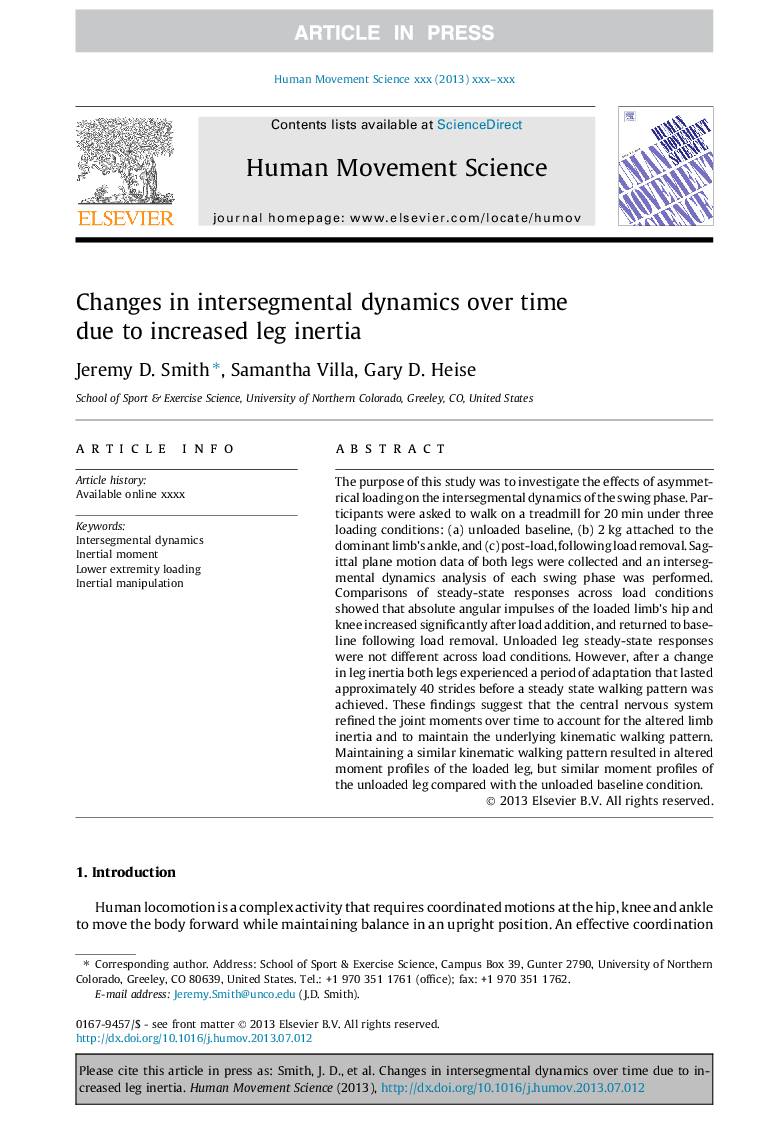| Article ID | Journal | Published Year | Pages | File Type |
|---|---|---|---|---|
| 10459156 | Human Movement Science | 2013 | 13 Pages |
Abstract
The purpose of this study was to investigate the effects of asymmetrical loading on the intersegmental dynamics of the swing phase. Participants were asked to walk on a treadmill for 20Â min under three loading conditions: (a) unloaded baseline, (b) 2Â kg attached to the dominant limb's ankle, and (c) post-load, following load removal. Sagittal plane motion data of both legs were collected and an intersegmental dynamics analysis of each swing phase was performed. Comparisons of steady-state responses across load conditions showed that absolute angular impulses of the loaded limb's hip and knee increased significantly after load addition, and returned to baseline following load removal. Unloaded leg steady-state responses were not different across load conditions. However, after a change in leg inertia both legs experienced a period of adaptation that lasted approximately 40 strides before a steady state walking pattern was achieved. These findings suggest that the central nervous system refined the joint moments over time to account for the altered limb inertia and to maintain the underlying kinematic walking pattern. Maintaining a similar kinematic walking pattern resulted in altered moment profiles of the loaded leg, but similar moment profiles of the unloaded leg compared with the unloaded baseline condition.
Keywords
Related Topics
Life Sciences
Neuroscience
Cognitive Neuroscience
Authors
Jeremy D. Smith, Samantha Villa, Gary D. Heise,
